Located in northwest Wyoming is one of the most magnificent natural beauties in the North America. No, I’m not talking about the Grand Teton National Park, although that’s definitely part of what makes the area so majestic since it’s just a few miles away. Just north of the Grand Tetons, you will find the first national park ever created in the United States, and some say the entire world. I’m talking about the Yellowstone National Park.
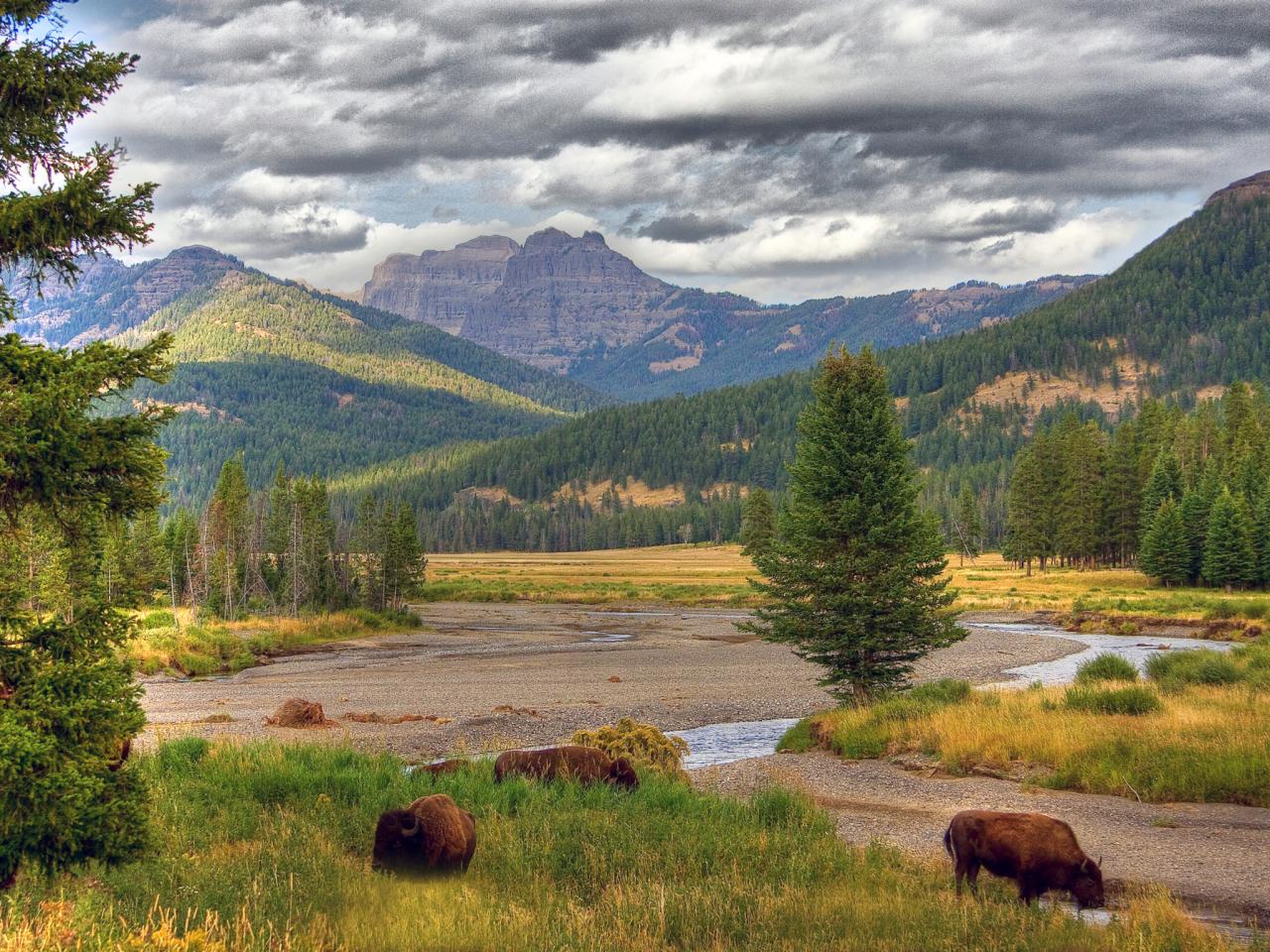
Photo: travelchannel
First of all, it’s massive. Spanning just under 3,500 square miles, Yellowstone is mainly situated in Wyoming, though parts of it stretch into Montana and Idaho as well. President Grant signed a law on March 1, 1872 that would officially make Yellowstone the first National Park.
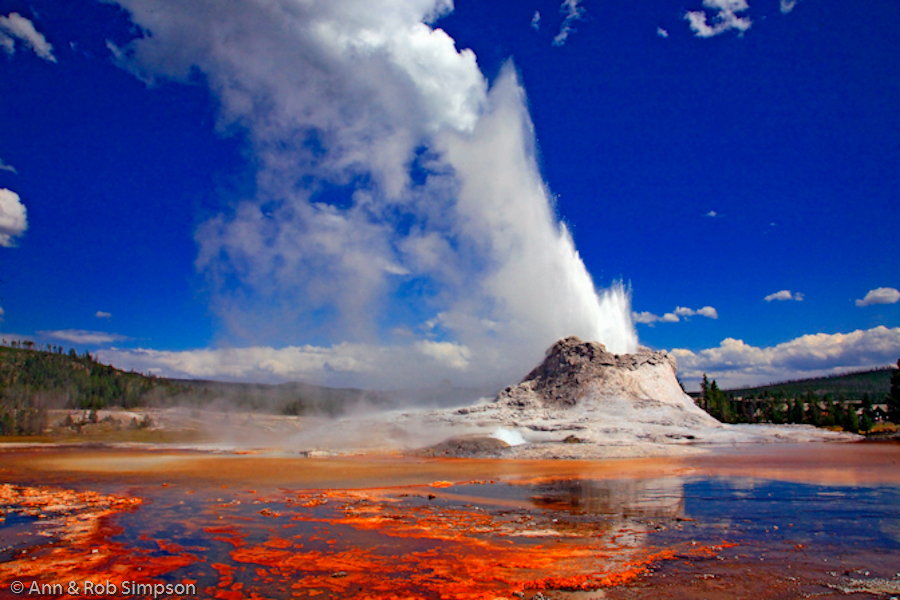
Castle Geyser erupting
Photo: kwizoo
One of the most popular attractions is the park’s geothermal activity. You might’ve heard of its most popular geyser named “Old Faithful” that erupts like clockwork every single day, but there are also hundreds of smaller geysers located all over the place.
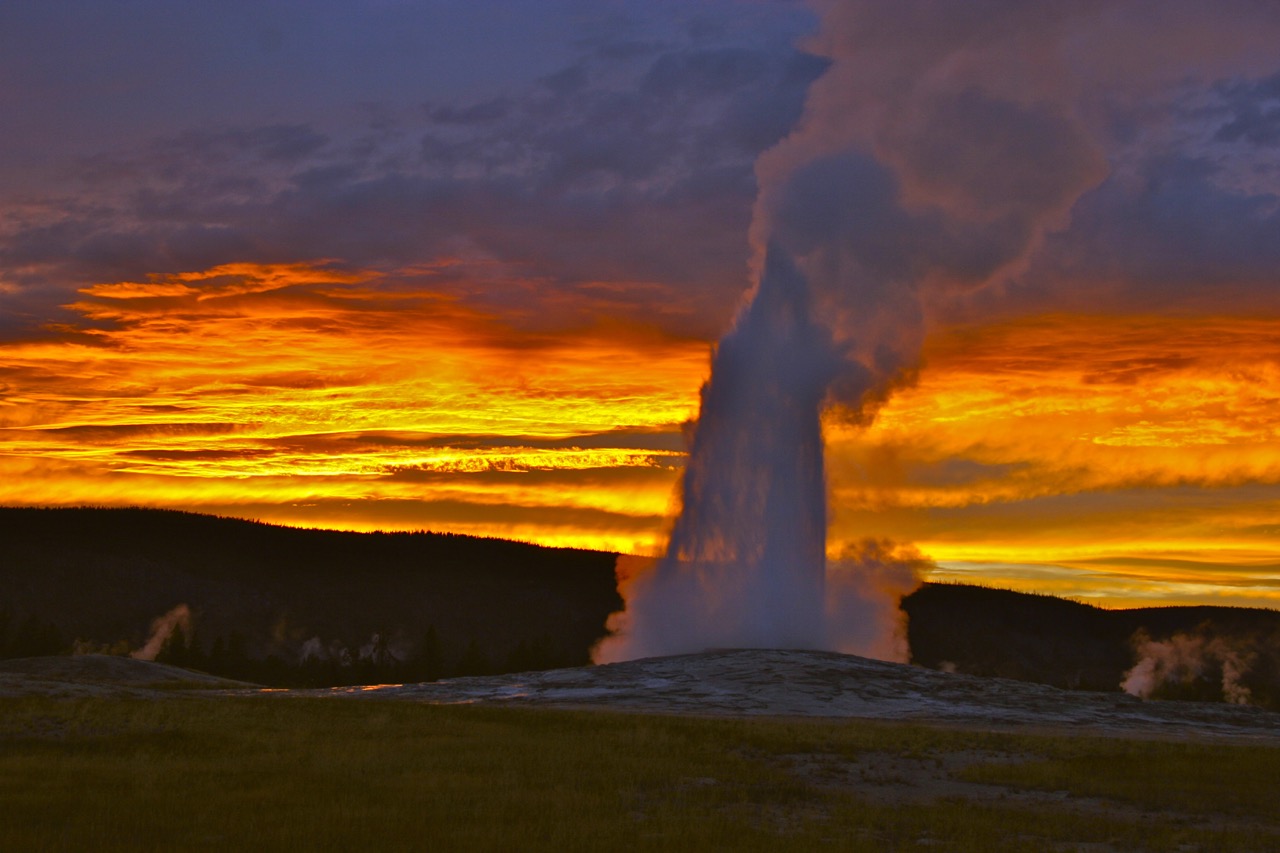
Sunset at Old Faithful
Photo: outdoor-society
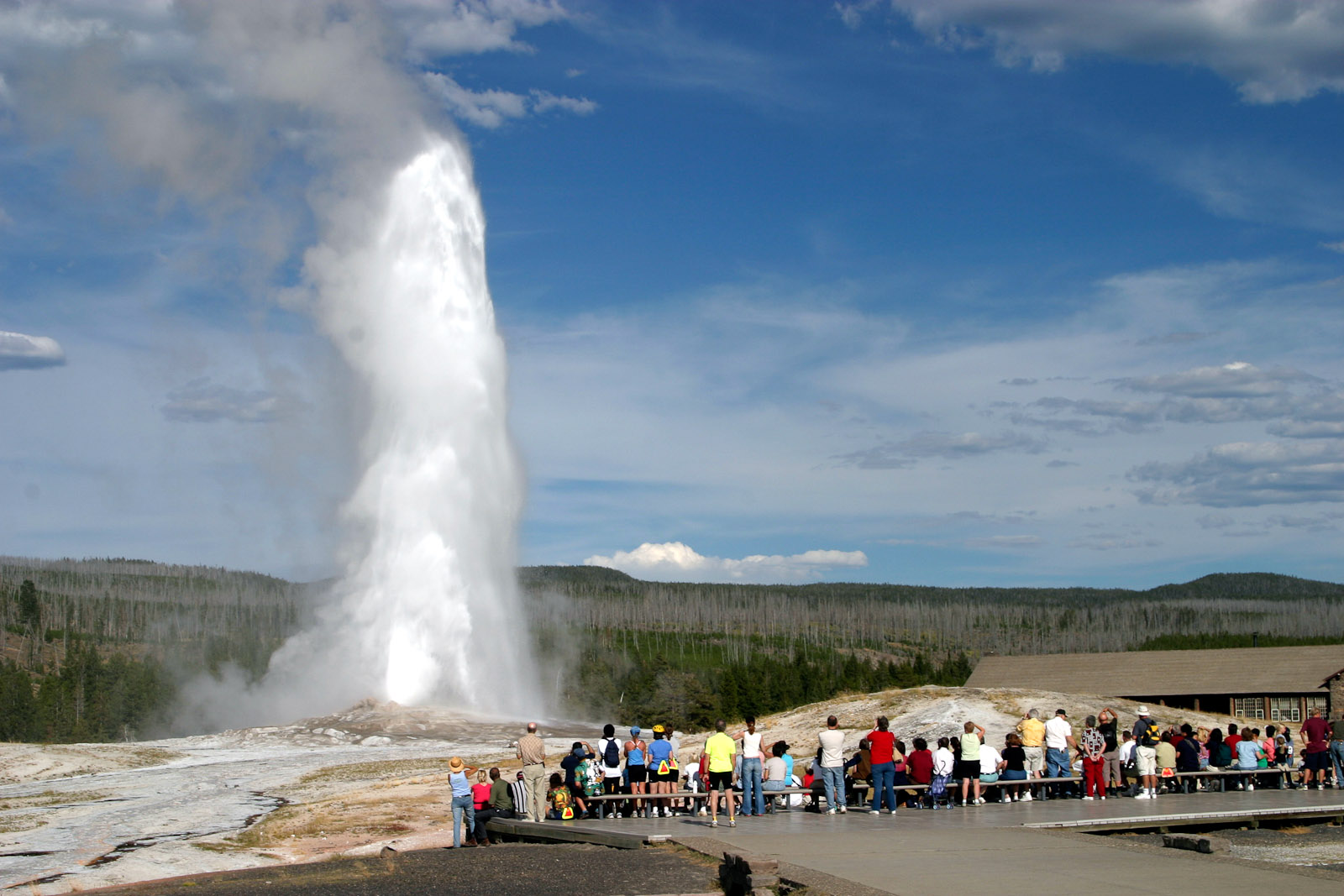
Old Faithful
Photo: wiki
After living in the Grand Tetons for almost a year, I spent a good amount of time in Yellowstone. One of the things that always fascinated me was these geothermal areas. Old Faithful was really cool to watch, don’t get me wrong, but some of the smaller sites were equally as impressive. You could be walking along and all the sudden you’d come up on a natural hot spring that has created some of the most beautiful colors due to the different minerals in the water.
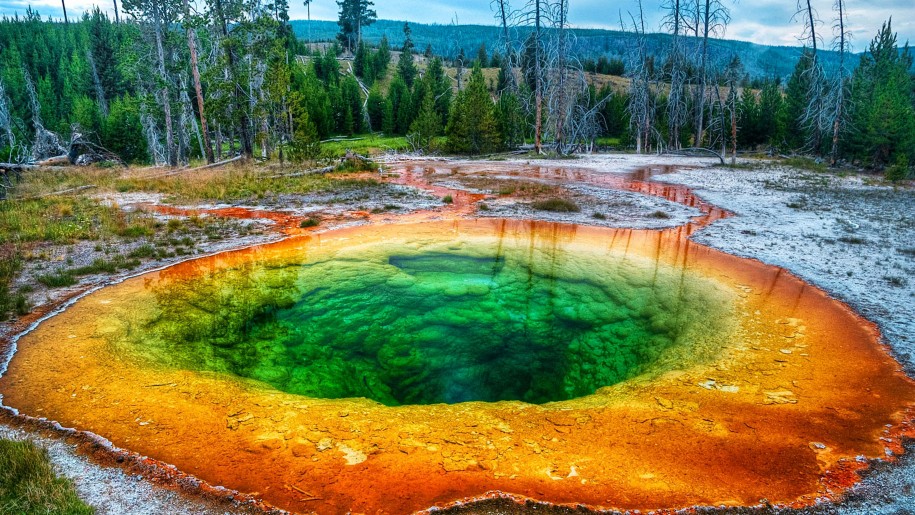
I believe this is the Morning Glory pool
Photo: wallpapers13
If you’ll notice in the images, in a lot of these areas there will likely be a wooden boardwalk for you to walk on and it’s very strongly recommended to stay on the walkways. There is so much activity going on underneath the surface that it’s very possible to break through the ground if you don’t know where to walk. It was described to me by one of the locals that in some spots what may appear to be solid ground, could actually be something similar to an eggshell.

Beautiful Winter Sunset in Yellowstone
Photo: adventurewomen
There is also said to be one of the largest super volcano’s in North America that’s often referred to as the Yellowstone Caldera that lies just underneath the earth’s surface. When you see just how active the geysers and hot springs are up there, you can’t help but believe it.

Photo: fellgrafix
But this is also what makes Yellowstone so naturally beautiful. At no other national park do you see the diversity of ecosystems that you’ll see in Yellowstone. One of the things that will stick with me forever is the colors. Of course you have the green of the forest, that you can see almost anywhere, but also the Yellowish dirt mixed in with reds and browns, and maybe my personal favorite, the blue in some of the geyser pools
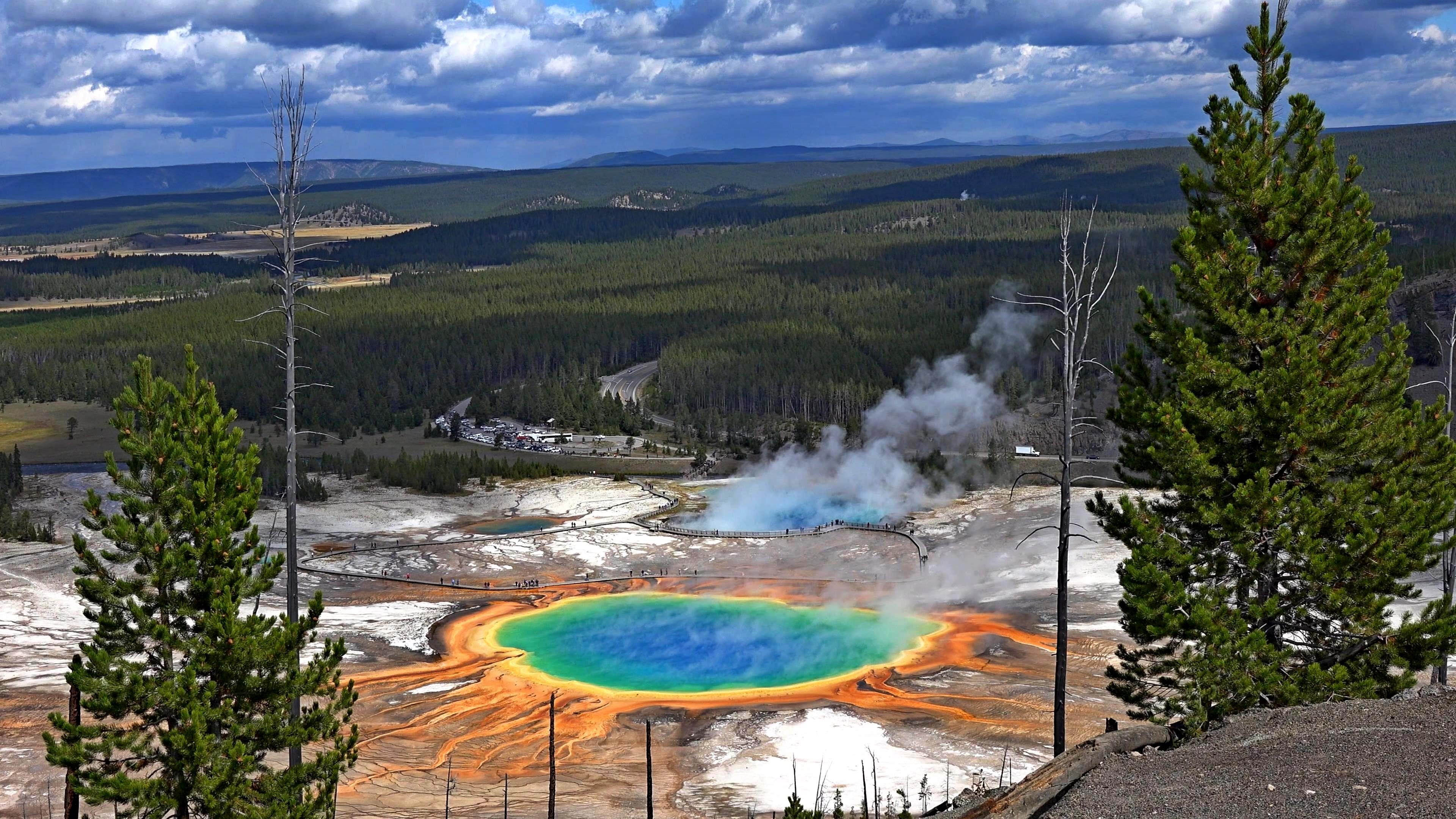
Grand Prismatic Spring
Photo: youtube
Nowhere is that more apparent then standing at the rim of the Grand Canyon of Yellowstone. It may seem wrong to have another canyon named “the grand canyon” even if they do add Yellowstone at the end. But when you see it first hand you will immediately see how it got the name. The contrast of the bright yellow rocks and dirt along side the green of the river, and of course the focal point being the massive Lower Falls.
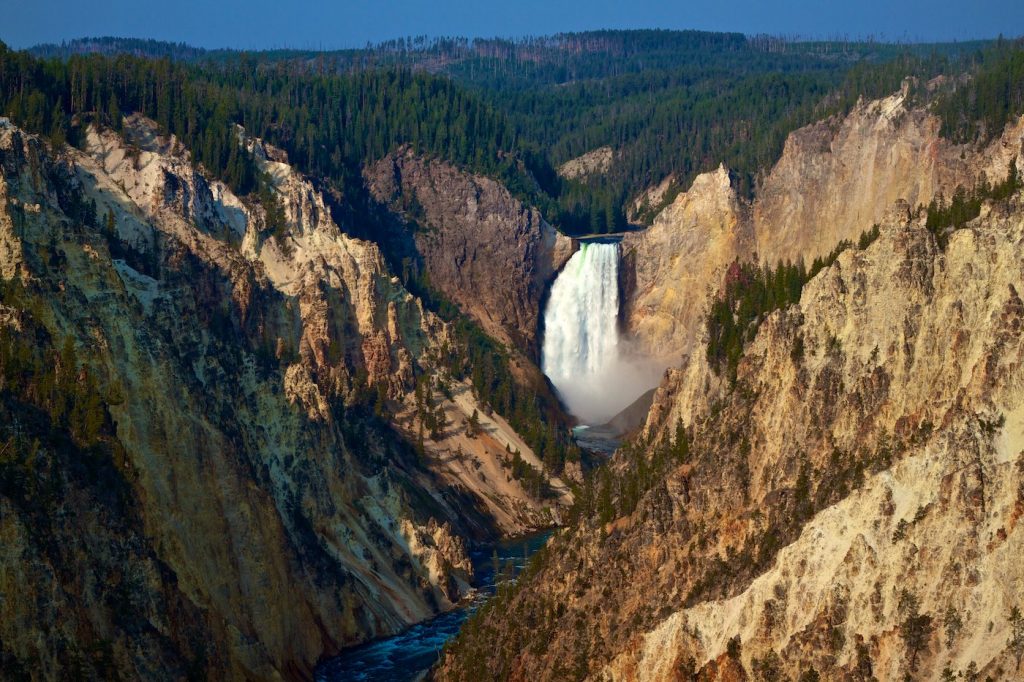
Gorgeous picture of the Yellowstone Grand Canyon and Lower Falls
Photo: mendosa
Technically there is three main waterfalls in Yellowstone’s Grand Canyon:
Upper Falls
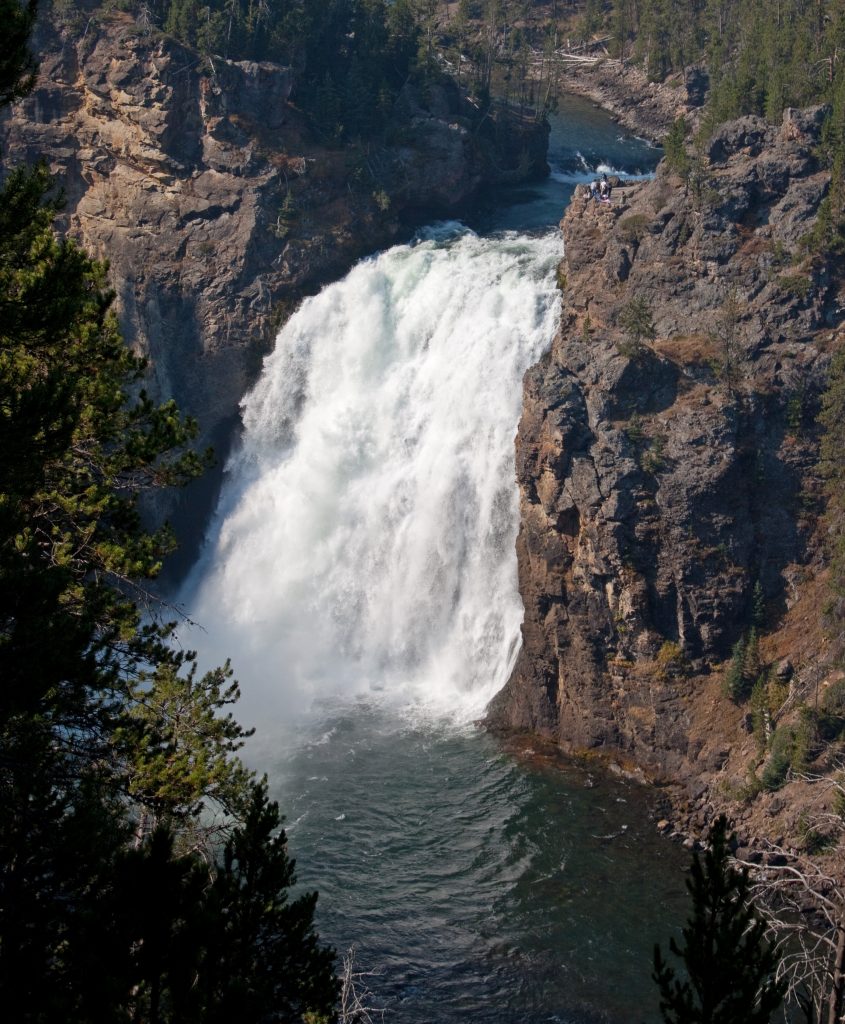
Upper Falls
Photo: thousandwonders
First is Upper Falls that stand roughly 109feet tall and even though it may not be as big as the the Lower Falls, it’s just as breathtaking.
Crystal Falls

Crystal Falls
Photo: mynaturalfamily
Next up would the least known falls of the three, Crystal Falls. It’s situated in the middle of the two other waterfalls. They can be seen from the South Rim hiking trail that will also give you spectacular views of the other falls.
Lower Falls
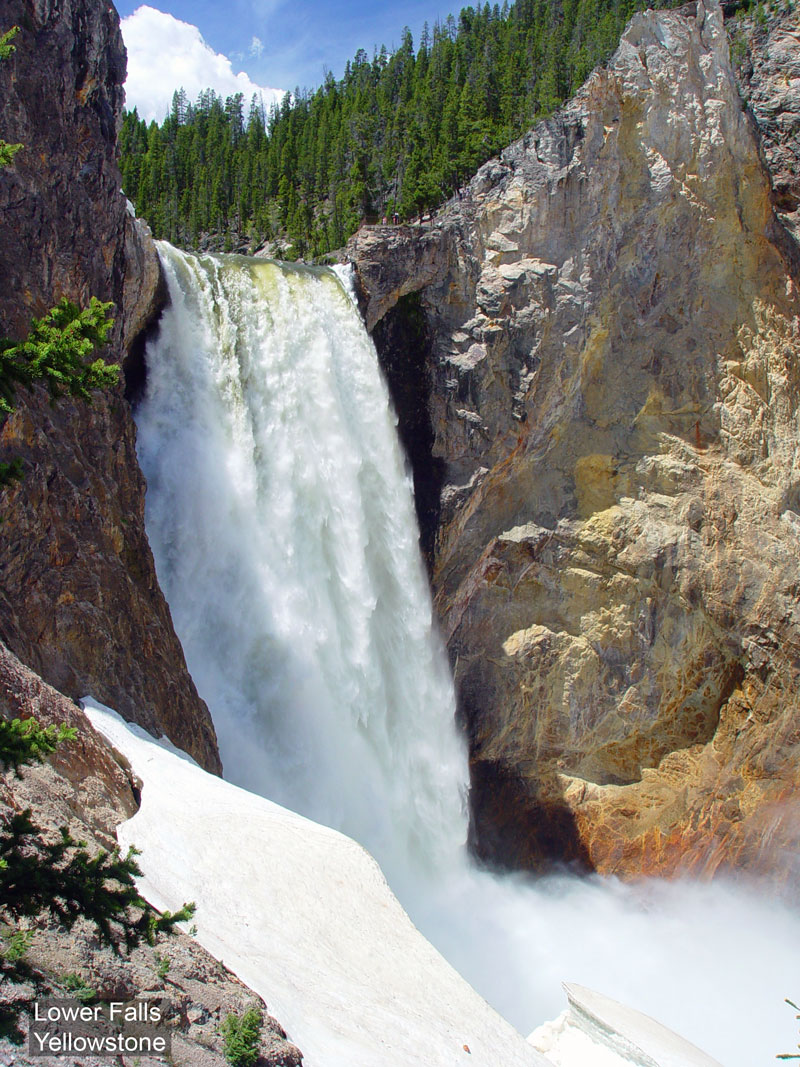
Another angle of Lower Falls
Photo: astronomynotes
Lastly, we have Lower Falls, which is by far the biggest of the three. It stands roughly 308 feet tall and is considered to be the absolute must-stop spot if you could only choose one. To give you an an idea of how spectacular these falls are, they are twice as tall as Niagara Falls. One of my favorite parts about the falls is the little sliver of green you see part way down the falls. Its hard to show it on a picture, but if you’ve been you’ll know exactly what I’m talking about.

Lower Falls, and you can see the Green stripe like I was talking about!
Photo: mendosa
In my opinion the best time to go visit is usually late spring or early summer. The winter runoff is at its peak so the water is a lot deeper, causing the water flow to be heavier and more rapid. During peak runoff there can be as much as 63,500 gallons, per second, going over the falls. Later in the year as all the snow melts, that figure can drop below 5,000 gal/sec.
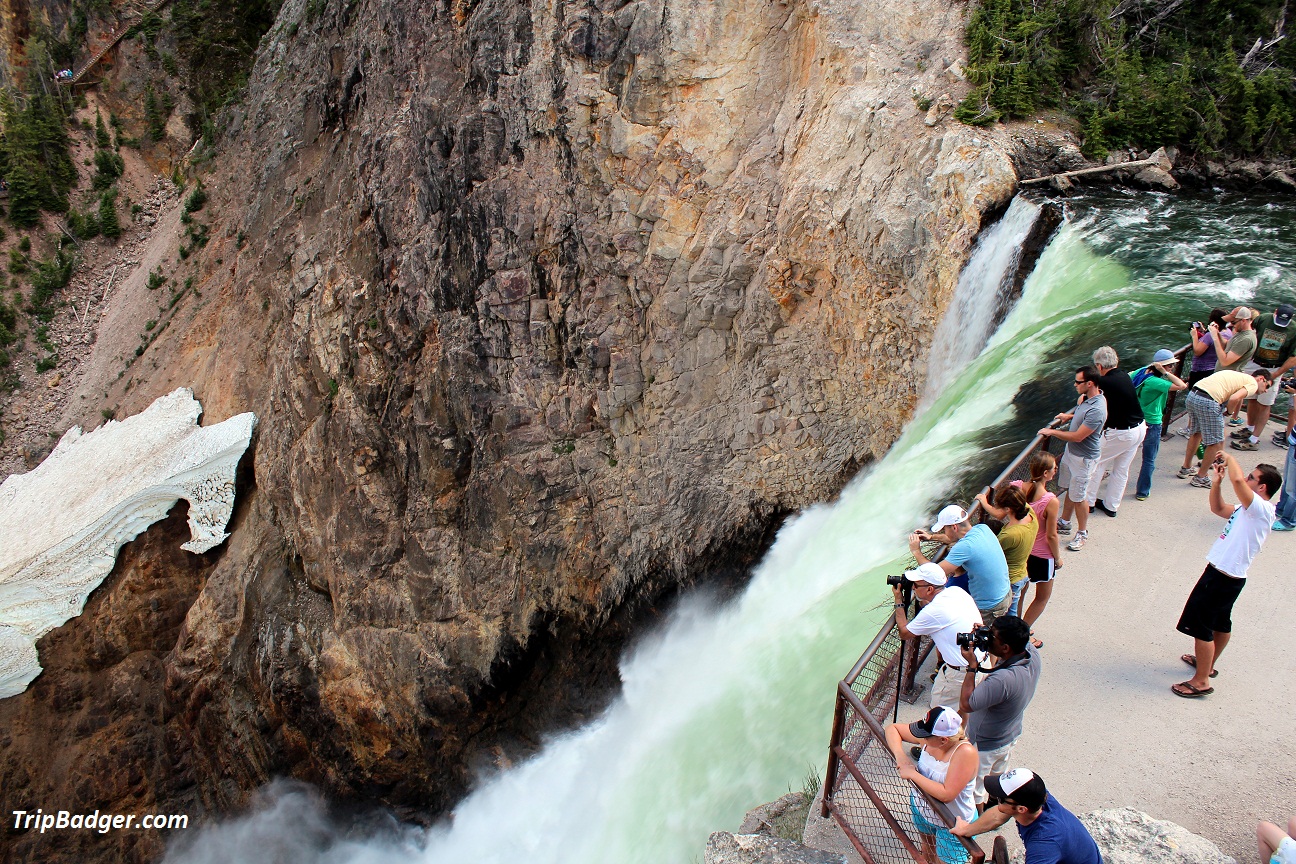
Overlook at Lower Falls
Photo: tripbadger
One thing that really shocks people when going to Yellowstone is the wildlife. I’m sure you’ve all seen photos of Bison, or Buffalo to some, coming right up to the cars on the road without a care in the world. I remember taking a bus tour where the driver had to come to a dead stop because there were two massive Bison fighting in the middle of the road.
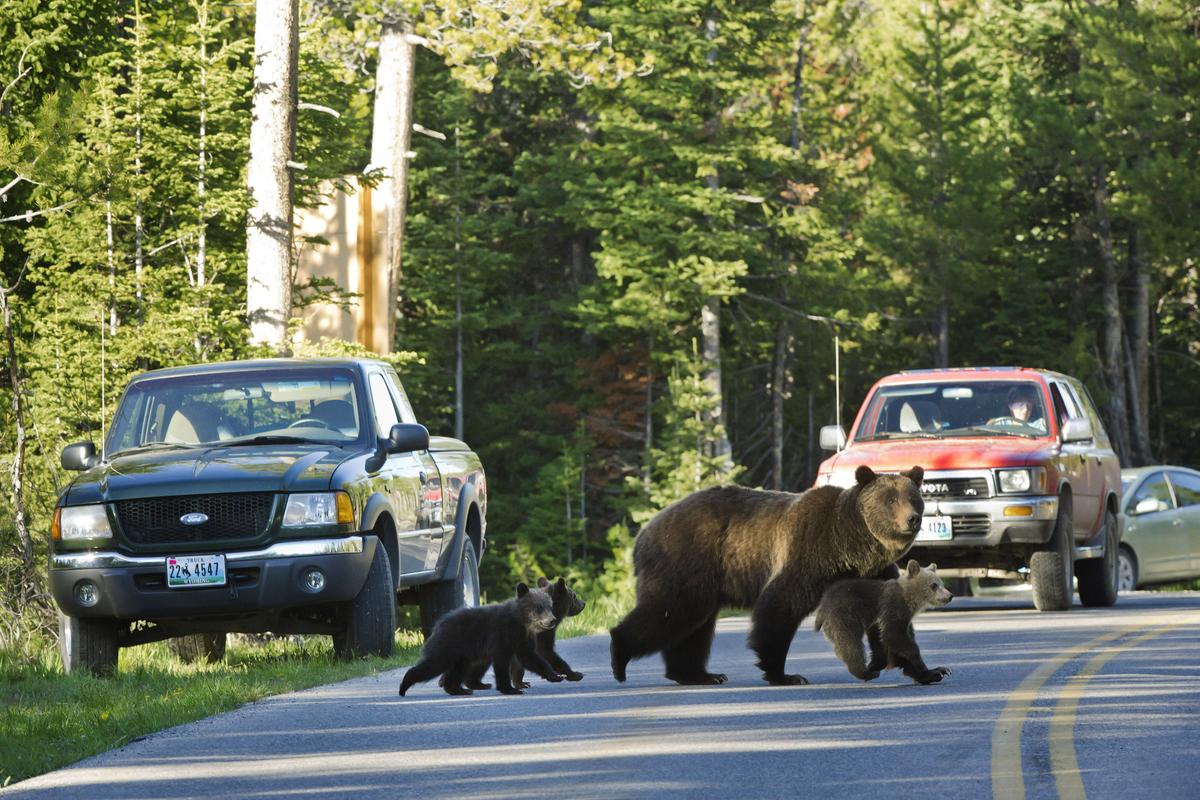
Don’t mind me, just passing through
Photo: spokesman
The animals do this because there is absolutely nothing for them to be afraid of, with exception of their natural predators. Like the Grand Teton National Park, there is no hunting anywhere in the park. So in a way, the animals own the place and do what they want, when they want. But that’s how it should be, at least a a few areas.
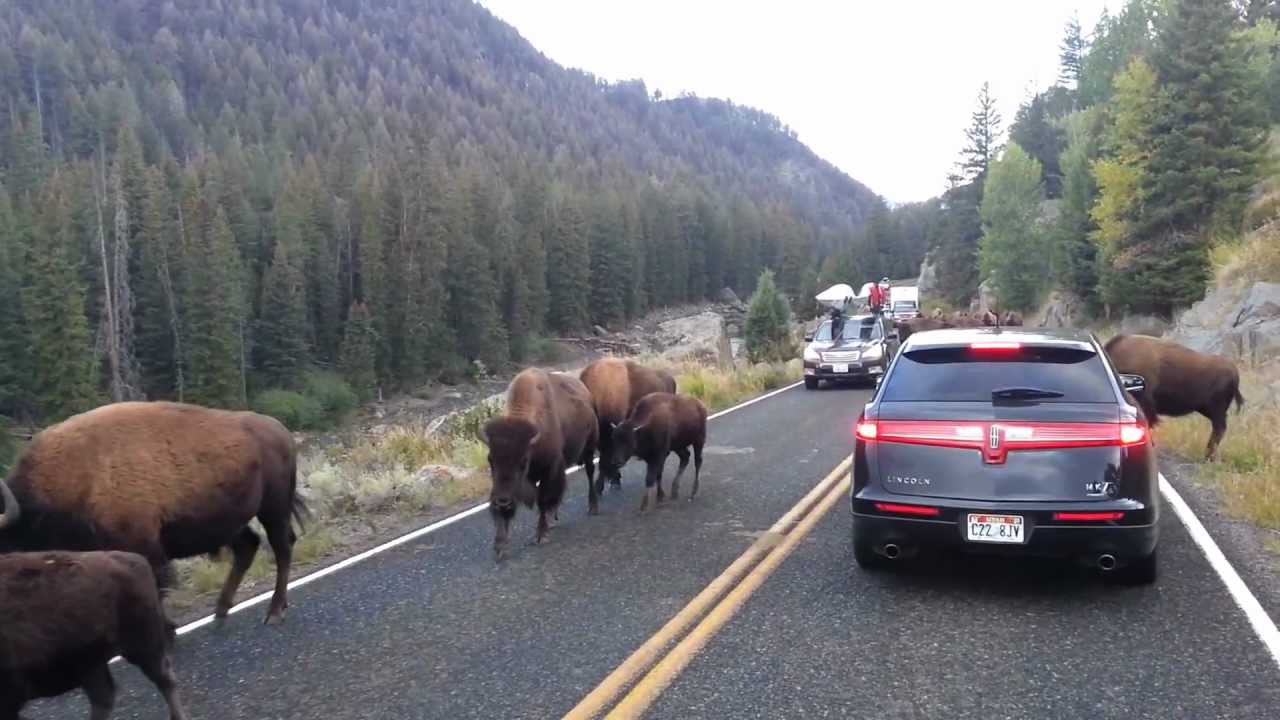
Bison owning the roadways
Photo: youtube
I’ve personally never been to Alaska, but I’ve been told its the only place that can compete with Yellowstone as far as natural beauty goes. If that’s actually true, then we as North Americans are extremely lucky to consider this place home.
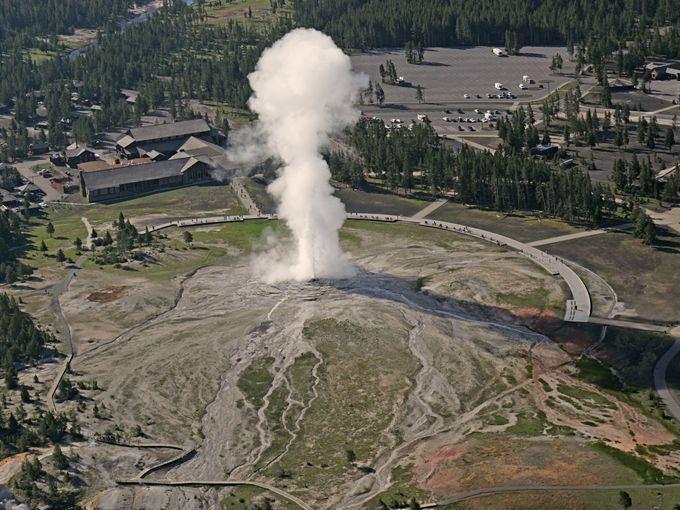
Birds eye view of Old Faithful
Photo: garnett

